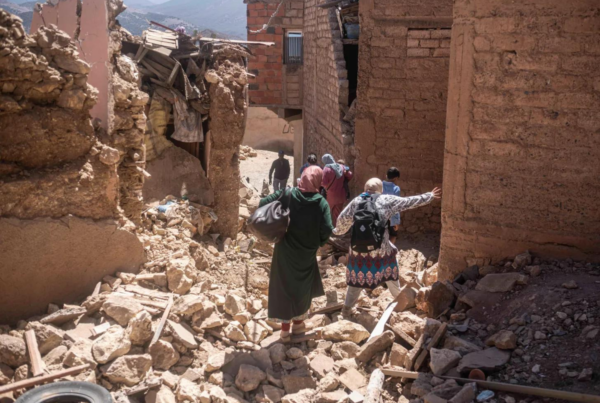
Cascading humanitarian crises across the globe fill the headlines and challenge donors who wish to be responsive on multiple fronts, yet who are unsure what commitments are appropriate or truly make a difference to the people caught in each catastrophe. Donors of any size can make effective, responsive decisions and deploy resources in a way that can help fill gaps within the outpouring of global support.
Knowing that situations and needs are multifaceted, change rapidly, and continue long after media coverage has ended, TPI provides information, organizations, and other resources grouped by situation in our online Resource Hub. For funders giving in response to international crises, keep in mind these seven points as you choose your next steps.
- Source your information wisely and with local knowledge.Identify experts in the field, donors, networks, and organizations that already have been working in the country or region. If possible, fund local and grassroots organizations. According to the U.N., less than 2% of funds to NGOs go to national and local organizations, while the vast majority goes to larger, international NGOs and multi- and bilateral organizations. Organizations and movements that arise within affected communities offer powerful partnerships for change. Their leaders not only have identified challenges but establish workable and culturally appropriate solutions.
- Take a humanistic, holistic approach to humanitarian aid.Basic survival resources are key, but people caught in conflict need other services, particularly those who are vulnerable, marginalized, and at risk. Refugees and internally displaced people alike need help with housing, mental health and trauma support, healthcare, education for their children, and connection to a broader community there to support them. Children are particularly vulnerable, of course, and communities of color, women, those of differing religions, and LGBTQIA+ people all report heightened violence and discrimination layering into the trauma of conflict.
- Recognize that in a crisis, context is complex, and flexibility and proximity are key.Situations shift, driven by multiple factors from weather to local and international politics, to environmental risks. A conflict-sensitive approach needs to be agile, responsive, and informed by people on the ground. You may wish to identify intermediary resources that find innovative ways to provide support to the communities that need it the most, such as community foundations and networks that know how and where to deploy resources locally.
- Remember that every crisis is interlinked with broader societal issues.Wars or even general unrest in the wake of crises threaten democracy and the strength of civil society. Much teeters on protecting civil society organizations, as well as on a free press that can share prompt, factual information to decision makers. Efforts around the world to protect independent media worldwide are vital to these twinned challenges.
- Balance immediate and longer-term responses.Donors who think strategically – even if quickly – about crisis response often are more likely to fill a funding gap when focusing on targeted issues, grantee populations, or innovative longer-term solutions that mesh with existing mission or purpose statements. Educate yourself on longer-term issues faced by crisis survivors, whether refugees or those who remain in the area of conflict, then extend your network around your particular mission, using established, expert sources for information and partnership opportunities. Immediate support is indispensable, but it is equally important to be committed for the long haul – consider that the average time refugees may spend in exile is 17 years, and the fight for democracy never ends.
- Be mindful of other funders. Listening to and coordinating with other funders or donors can help facilitate collective learning and maximize impact. While every dollar is certainly needed, it’s also crucial to take a moment to try to effectively complement the efforts of other donors, organizations, and governments. Organizations such as the Center for Disaster Philanthropy offer webinars on an ongoing basis that donors can attend to learn more about what is needed in specific crises, or donors can sign up for updates to keep up on current issues as they unfold.
- Go beyond the dollars. Each of us has influence and power beyond the money we can give. Regardless of your financial status, you have agency. Write a letter to your Congressperson, author an opinion piece, coordinate with your place of worship to sponsor a refugee family or volunteer in some other capacity. We all have some way we can help – even having important conversations about democracy, agency, and activism over the family dinner table.
And as always, whatever your area of focus, it’s helpful to remember six powerful practices used by thoughtful funders. These ideas are not new, but as they are wielded with greater sophistication, they are yielding more powerful results.
Click here to learn more about TPI’s Center for Global Philanthropy and our work supporting funders of all kinds who wish to effectively give around the world. We support individuals, families, foundations, and companies to maximize the impact of their giving.


